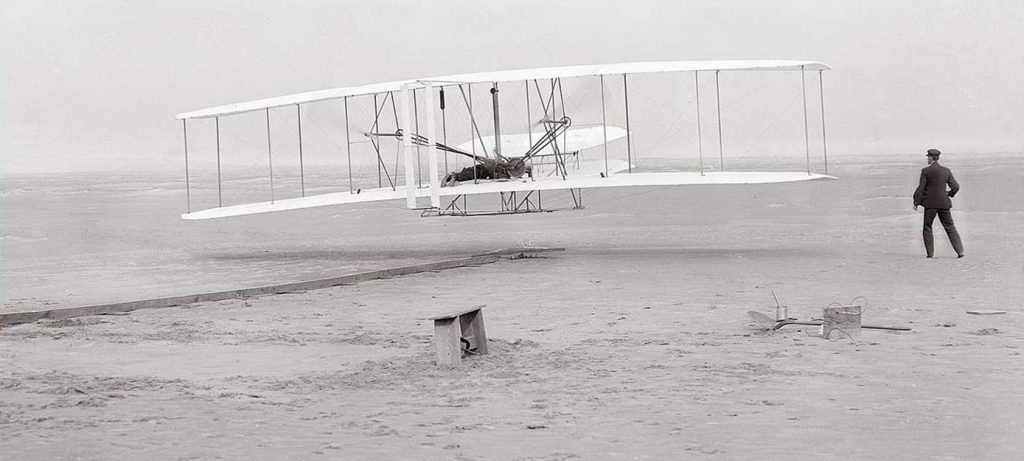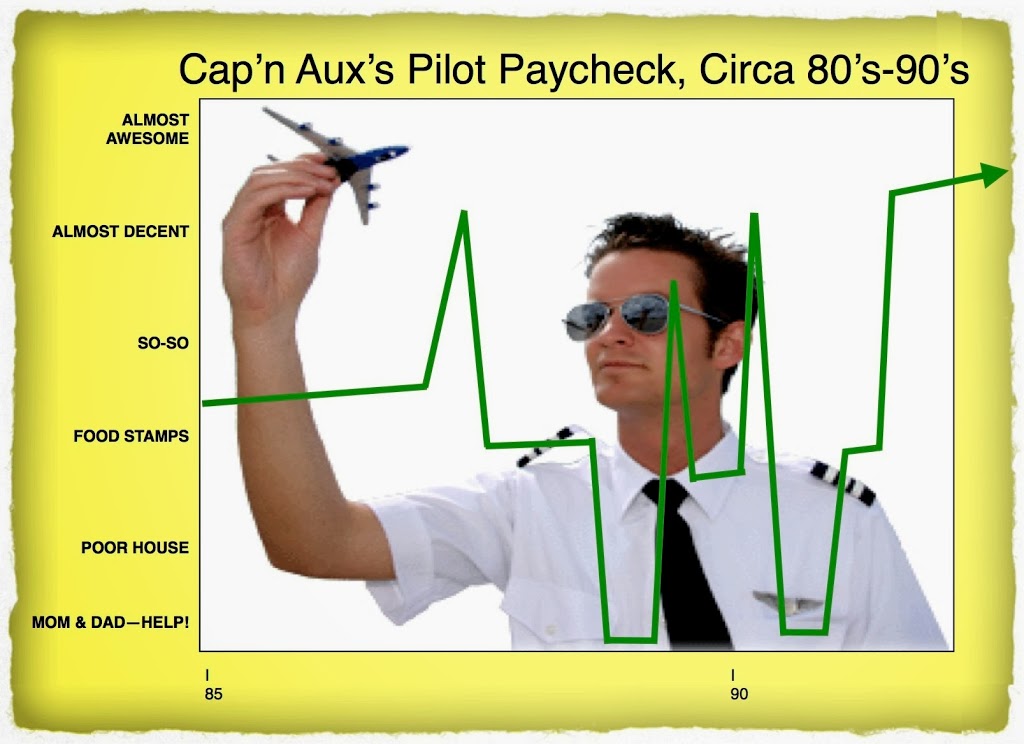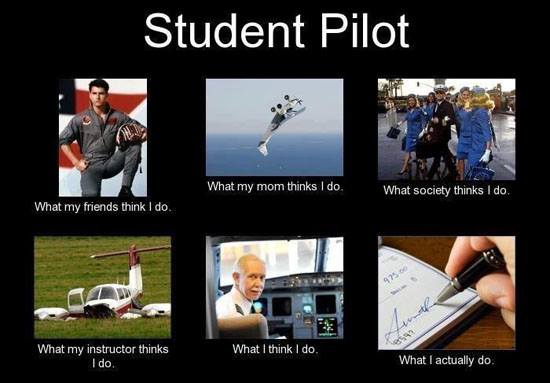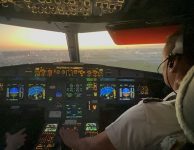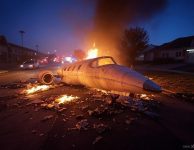The Airline Cockpit in 7 Steps—Updated!
The Airline Cockpit in 7 Steps—Updated!
Ladies and gentlemen, from the flight blog, this is your Cap’n speaking.
By popular demand, the following is an update of one of our most viral blog posts ever, and rightly so. Advice for you up-n-comers on your pending airline career!
Following the post are quite a few updated scholarship opportunities you may want to look into, whether pursuing an aviation career or otherwise.
And now . . .
The Airline Cockpit in 7 Steps—Updated!
Ladies and gentlemen, pilots and aviatrixes, I have just turned off the “Looming Pilot Shortage” sign (which has been on for 30 years now), and you are free to pursue your aviation dream! No longer “looming”, it’s here!
(1/22: Update to the update: as you will notice, this was written pre-Covid. Post-Covid…is anybody’s guess! But, airlines have been caught massively short of pilots!)
Honestly, for you up-n-comers, not since the Golden Age of Air Travel (circa 1950’s) has there been such a pressing need for airline pilots! Regionals are beginning to feel the heat, even to the point of cancelling flights. I believe in the next 5-10 years, airlines—starting with the Regionals—are about to be caught with their blue uniform pants down.
“That’s fantastic!” you shout as you jump for the sky. But then you land, and reality hits. So you ask, “Umm…how do I get there?”
That’s the multimillion dollar question, my friend, one that oodles and oodles of you have been asking me for the past three years! And I think it’s high time I answered all of you.
First of all, some Caveats
- This is my personal take on matters, and I could easily be wrong.
- I can only offer you general advice, and talk from my own, personal experience.
- As Confucius say, “I cannot lead you down the road; I can only point the way.” Each one of you must seek and forge your own path to your dream job. And some of you WON’T make it. I’m not being pessimistic here, just realistic.
- I started flying nearly 40 years ago, and was hired by my final airline 26 years ago. And, in this business, things change. In fact, the name on the door of my own airline has changed twice!
- Having initially trained decades ago, I am completely unfamiliar with the whole new concept of “Flight Academies.” Then again, many other things stay the same, such as some of the traditional roads to the airline cockpit.
- Speaking of changes, my advice below is subject to change by any number of factors. This is an extremely volatile business; the first to suffer in an economic downturn, and the last to recover. That “looming pilot shortage” may easily evaporate overnight due to economics, politics, terrorism, massive meteor impact…or who knows what.
- I can’t tell you “this college/flight school/path is better than that.” If I did, I would be doing you a disservice, and would inevitably be wrong.
- Along the same lines, I can throw out some time-building suggestions, but it’s up to you to figure out what works best for YOU.
- Finally, before you sink your life savings into this profession, read my post, Top 10 Downers of an Airline Career. (Also listed in the further reading links, below.)
Still with me? OK, here goes . . .
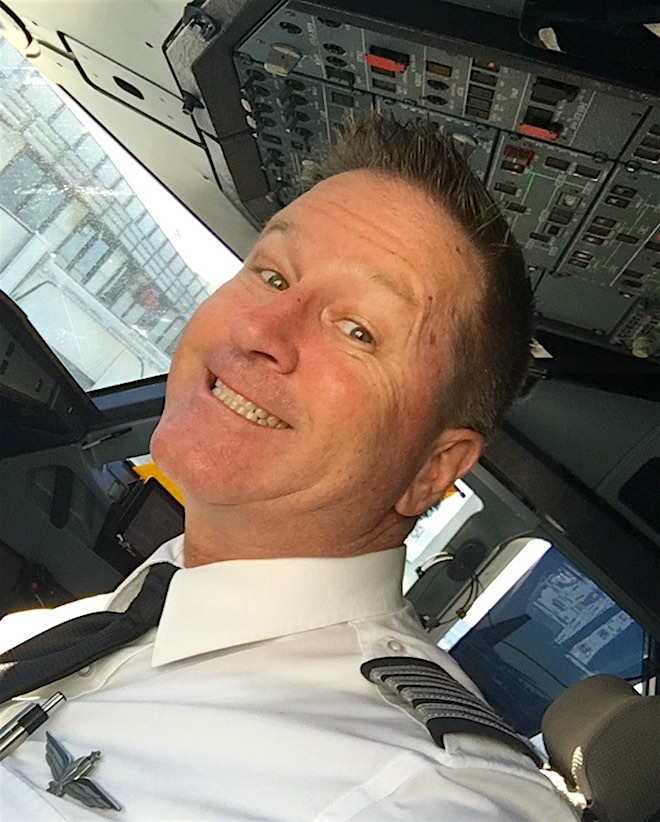
The Airline Cockpit in 7 Steps—Updated!
STEP 1: GET GOOD GRADES!
Don’t have ’em? Start NOW!
What? You’re only in Kindergarten? Great! Get in the habit of getting A’s!
The Airline Cockpit in 7 Steps—Updated!
STEP 2: KEEP YOUR NOSE CLEAN!
A single DUI, marijuana charge or the mildest misdemeanor conviction will probably ban you from the airlines. Despite the “looming pilot shortage,” there’s still too many perfect pilots with perfect records out there.
The Airline Cockpit in 7 Steps—Updated!
STEP 2.5: Speaking of Which . . .
If you already have a pilot’s license or two: don’t get violated! Also, if you are worried at all about any medical conditions, spend $100 and get yourself a First Class Aviation Medical checkup. This will tell you if you’ll even qualify—medically—for a pilot’s license. For some conditions, there may be exemptions for which you can apply. (By the way, your CPL will require vision correctible to 20/20, and no colorblindness.)
The Airline Cockpit in 7 Steps—Updated!
STEP 3: CIVILIAN OR MILITARY?
I know nothing about the military option, so if you choose it, you’re on your own. Good luck, we’re all counting on you—and your country is grateful for your service!
If you go civilian, you’ll have to find a way to pay for all your training. If you can’t afford it (or get amazing scholarships), then perhaps it’s military for you. But, while your recruiter may promise you the moon—and an F-something strapped to your butt—you may find yourself committed to six years of deck swabbing.
Alternate Option: Go non-pilot military, get out asap, and use your GI bill to fund your civilian flight training. I know several who have gone or are going this route.
The Airline Cockpit in 7 Steps—Updated!
STEP 4 & 5: GO TO COLLEGE and/or START FLIGHT TRAINING
You’ll need to get:
1.) a 4-year degree, or at least a 2-year degree.
2.) All your flight ratings.
By that I mean through PPL (Private Pilot License), CPL (Commercial) and Instrument. You’ll eventually need a Multiengine endorsement, and most likely also a CFI (Certified Flight Instructor.) When you get to 1,500 hours, you can finally get that Black Belt of pilot licenses, the ATPL (Airline Transport Pilot.)
You can do 1, then 2, or 2 then 1, or 1 and 2 together. Whatever works into your schedule and budget.
I started my PPL while in high school. Upon graduation, I enrolled in a junior college that specialized in flight training. In 2.5 years, I received all my basic flight ratings (CPL, Instrument, Multi, and CFI), along with a 2-year degree. Then I spent the next several years flight instructing while finishing up a 4-year degree.
The Airline Cockpit in 7 Steps—Updated!
STEP 6: BUILD FLIGHT TIME
Now comes the hard—and fun—part.
This is the “Catch-22” of aviation: How does a new pilot get a flying job without the flight time, and get the time without the job?
Just like DC and Allen in my novel, The Last Bush Pilots, this dilemma plagues every pilot at every stage of their career.
The most common entry-level job in flying is CFI (Certified Flight Instructor.) I recommend starting out this way for 2 reasons: 1.) It’s the easiest way to get a flying job or start your own business. 2.) By teaching others, you will really learn how to fly! You’ll watch others make mistakes, and have to correct them. Many things you were fuzzy about will become clear.
Other possibilities: Banner Tow; sky dive hauler; crop duster (a dying breed); charter pilot; pipeline patrol; freight dog…the options are, well, not endless, but by the time you get to this point, you should have a good handle on what you will be able to do.
After you build several hundred—er, make that thousand, hours, you can . . .
The Airline Cockpit in 7 Steps—Updated!
STEP 7: GET HIRED BY A REGIONAL . . . THEN A MAJOR
Because you’ve kept your nose clean, networked, kissed the appropriate butts, logged some stellar flight time, applied to every airline in the universe . . . you’ve managed to bag an interview!
You will FAIL.
Yes, that first interview is pretty much a given bomber. But keep plugging away! That first one was a great watershed test for you! You learned a ton. You’ll have a fighting chance at the next one. The third, better than even odds. The fourth . . . you’re in!
Then you’ll be rolling in dough!
Eh, well, not exactly. (Now go back and read that Top 10 Downers post I was talking about!)
The Airline Cockpit in 7 Steps—Updated!
Frequently Asked Questions
What’s the most common way to get to the airlines, civilian or military?
Early on, it was military or nothing. Now, I believe, the pendulum’s swung, with about 60% or more now coming from civilian ranks.
What’s the best school or flight academy to go to?
Again, I can’t recommend specifics. Nor would I want to. The list is always changing, and only you can determine what fit is best for you. All that matters is that you: 1.) Have a 4-year degree; 2.) Have all your flight ratings, at least through instrument/CPL
Do you recommend ERAU (Embry Riddle Aeronautical University)? Do you recommend (your choice of institution here.)
Grr . . . I say again, I can’t recommend specifics!
All I can say is, Embry Riddle DOES have a very good reputation…but it is about the most expensive club around, sort of the “Harvard” of aviation. Can you afford it? Only you can answer that.
Again, I “say again:” in the end, you need two things: 1.) all your flight ratings; 2.) a 4-year degree.
How you get them doesn’t really matter!
What ab initio flight academy do you recommend? I want to bypass that 1,500 hour rule for the ATPL and get it at 1,000.
What am I, a broken record? Again, I can’t recommend anyone; I DON’T KNOW! Moreover, like I said above, it hardly will make a diff. I really am unfamiliar with the whole “flight academy” concept, so you’re on your own with that. It does seem to be “the way of the future,” however. Just make sure you’re not spending more $$ than you need to get the same thing.
One thing I will say about “ab initio” schools like ERAU, North Dakota, etc., is that they are able to get you both a 4-year degree and the ratings. Moreover, they are allowed to reduce the 1,500 hour ATPL requirement by x-hundred hours (up to 500, depending on the program.) But, you have to do the math and figure out if that extra 500 is worth the extra expense of an academy like these.
That new FAA law requiring 1,500 hours for the ATPL (Airline Transport Pilot License) SUCKS! How do I deal with it?
Well, ya, I agree. I think it’s a political, knee-jerk, counterproductive move. They raised the bar for no reason other than to look good to the general public. However . . . IT HARDLY MAKES A DIFF.
While the fabled “Looming Pilot Shortage” is somewhat “here,” you will probably still need more than 1,500 hours to be attractive to a regional carrier—let alone a major—where an ATPL would be required. When I got hired by my 1st regional, I had about 3,000 hours; major: 5,500!
How do I make enough money for flying? How much do I need?
That’s the $100,000 question all of us have to figure out on our own! Get an inheritance! Get good grades and get scholarships! (See below for some scholarship info.) Sell your home and/or first born! And here’s a concept: Work for it!
I’ll mention again here the option of enlisting in the military, then once you get out, using your GI Bill to fund your training .
One bit of advice: if possible, instead of paying for an hour of training here and there only, when your paycheck allows it, save up a chunk of money FIRST then do it all at once. Otherwise, you’ll be spending extra time and money just reviewing what you learned two months ago. But, if that’s what you gotta do, that’s what you gotta do. Again, everyone’s situation is different.
What can I do right now if I’m too young (or can’t yet afford) to start flight training or college?
I like your attitude—you’re being proactive!
Aside from getting stellar grades, go get a job at your local airport. Doing what? Anything, from cleaning toilets to fueling trucks! The point is to network—get your name and face out there, meet pilots, hear their stories, get to know them. When the time comes, you may have some great contacts to finagle free or cheap flight hours, trade menial jobs for flight time, etc. And when you do receive all your ratings, you may even have your first job lined up from your contacts!
C’mon, the Looming Pilot Shortage is here! Do I REALLY need a 4-year degree? Do I REALLY need good grades?
YES! There’s still a HUGE pool of qualified pilots out there, and for the foreseeable future, you need to be ultra-competetive. This may change over time, but for now, those just starting out…you need the whole shebang!
What should I fly, pistons, turboprops or jets?
You’ll fly whatever you can get your hands on and like it! (You really will!)
I’m gonna fly for (insert your favorite brand name here) Airlines cuz they’re awesome!
Hahahaha, you’re so cuuuute!
You will fly for whomever the hell hires you, and LIKE IT!
That said, I did make it to my “dream” airline, by sending them one résumé a month for 5 years! But then the name on the door changed . . . then changed again . . .
Yep, your favorite brand may very well disappear in a merger, bankruptcy, etc. Remember Pan Am, TWA, and Eastern? The name on the airline’s door that hires you is no guarantee of the name that you retire from!
What type rating should I buy, B737 or A320?
None of the above!
DON’T WASTE YOUR MONEY ON A TYPE RATING!!!
Anyone trying to tell you otherwise is trying to rip you off! It’s like spending $10,000 on an advanced course in open heart surgery when you’re a 2nd year medical student. The only thing a type rating will do for a pilot with 1500 hours or less is provide a laugh for the people reading your résumé!
Once you start flying for an airline and rack up thousands of hours, THEN perhaps a type will be necessary. Southwest Airlines, for example, requires a B737 type before interview . . . and over 1,000 hours PIC (Pilot in Command) in a jet or turboprop.
There was ONE TIME in my life that I “bought” a type rating: after I had been hired and flew for a major airline. I was later furloughed (laid off.) By then, I had about 7,000 hours of flight time and well over 1,000 hours PIC. A small airline was hiring, but a 737 type rating was required to apply. I blew $8,000 on a B-737 type. It seemed like a reasonable thing to do at the time . . . but I still DIDN’T get the job.
That doesn’t mean I wasted my money; it was a calculated risk that didn’t pan out. But my point is, by the time I bought the type, I was qualified, and it could have possibly helped at that point. But a kid with 400 hours and a 737 type (sorry, nothin’ personal) would be laughed at!
The Airline Cockpit in 7 Steps—Updated!
The Most Important Career Advice I Can Ever Give You
You have chosen a potentially brutal, volatile, extremely stressful career. You have also chosen the greatest job that was ever conceived! There are absolutely NO guarantees that you will “make it.” If you won’t be happy until you land in the left seat of a jumbo jet, then . . . stay out of this business!
Pilots are typically goal-oriented people. They won’t stop until the task is accomplished. This drive and focus will help you achieve your goal, but . . .
savor each and every moment of the journey!
Never forget, the first time you step into that beat up old single engine Cessna for your very first flight lesson . . .
YOU ALREADY ARE LIVING YOUR DREAM!
Life is an adventure—and this career, exponentially so . . .
ENJOY THE RIDE!
— — — — —
The Airline Cockpit in 7 Steps—Updated!
Speaking of aviation careers, I did a podcast interview last year over at
Host Carl and I talked at length about aviation careers—
How to get into it, what to expect, & how to survive! Check out Episode 54:
http://www.aviationcareerspodcast.com/acp054-a320-captain-and-alaska-bush-pilot-capn-aux/
Related Cap’n Aux Links
- Original “Cockpit in 7 Steps” Post http://capnaux.com/the-airline-cockpit-in-7-simple-steps/
- Top 10 Downers of an Airline Pilot Career http://capnaux.com/?p=42
- The Future of U.S. Aviation http://capnaux.com/2013/07/03/happy-4th-the-future-of-u-s-aviation/
- Aviation Careers podcast interview:http://www.aviationcareerspodcast.com/acp054-a320-captain-and-alaska-bush-pilot-capn-aux/
- Airlinegeeks.com podcast interview: http://30kfeet.us/1hRSwJ3
Scholarships and Careers—Links and Further Reading
(Some links may be obsolete)
- Don’t get Scammed! A good link to scholarship scams by Comparitech: https://comparite.ch/scholarship-scams
- ALPA: “Looming Pilot Shortage is a Myth” http://www.alpa.org/Portals/Alpa/PressRoom/PressReleases/2014/2-4-14_14.10.htm
- http://www.aviationcareerspodcast.com
- http://expertaviator.com
- NYCA: Fact and Fallacy of the Looming Pilot Shortage http://www.nycaviation.com/2013/01/the-fact-and-fallacy-of-the-looming-pilot-shortage/#.Uz3wGNwvjwI
- Good article by Formation Blogger Ron Rapp: http://blog.aopa.org/opinionleaders/2014/04/16/contract-pilot/
- BA’s Future Pilot Program (thanks Jamie M. for this!) http://www.britishairways.com/careers/futurepilot/futurepilot_home.shtml
- Money Saving Pro’s Guide to Scholarships https://www.moneysavingpro.com/blog/ultimate-guide-to-college-scholarships/
- http://stuckmicavcast.com
- http://www.rapp.org/archives/2013/06/scholarships/
- https://www.scholarships.com/financial-aid/college-scholarships/scholarships-by-type/aviation-scholarships/
- http://aviation.about.com/od/Technical-Careers/a/Scholarship-Guide-For-Pilot-Training.htm
- http://airplanegeeks.com
- http://airlinepilotguy.com
More Education Resources and Scholarship Opportunities
Source: Online Math Camps http://www.mathcamps.org
- NSF Scholarships in Science, Technology, Engineering and Mathematics – http://www.nsf.gov/funding/pgm_summ.jsp?pims_id=5257
- Science, Mathematics And Research for Transformation (SMART from the DoD) – http://smart.asee.org/about/eligibility
- Edward C. Bryant Scholarship in Survey Statistics – http://www.amstat.org/awards/ecbryantscholarship.cfm
- Xerox Minority Scholarships – http://www.xerox.com/jobs/minority-scholarships/enus.html
- $1,000 College Scholarship from Rover – https://www.rover.com/blog/rover-college-scholarship/
- CANFIT Scholarships – http://canfit.org/scholarships/
- American Culinary Federation Scholarships – https://www.acfchefs.org/ACF/Education/Scholarships/ACF/Education/Scholarships/
Links Provided by Aaron Thompson of OpenEducators.org
- Open Educators http://openeducators.org
- Scholastic Art and Writing Scholarships http://www.artandwriting.org/scholarships/
- Stephen Bufton Memorial Scholarship https://sbmef.org/Site/Scholarships.cfm
- Green Home Improvement Scholarship http://www.homeadvisor.com/r/scholarships/#.WKH3chjMyRs
- Create-a-greeting-card Scholarship http://www.gallerycollection.com/greeting-cards-scholarship.htm
- Congressional Black Caucus Scholarship https://cbcfinc.academicworks.com/opportunities/389
- Creating Your Budget (Worksheet and Tips) – https://studentaid.ed.gov/sa/prepare-for-college/budgeting/creating-your-budget
- 54 Ways to Save Money – http://www.americasaves.org/for-savers/make-a-plan-how-to-save-money/54-ways-to-save-money
- College Savings Calculator – http://www.mortgagecalculator.org/calcs/college.php
- Repayment Estimator – https://studentaid.ed.gov/sa/repay-loans/understand/plans#estimator
— — — —
CLEARED TO LAND
Touching Down March 9th
